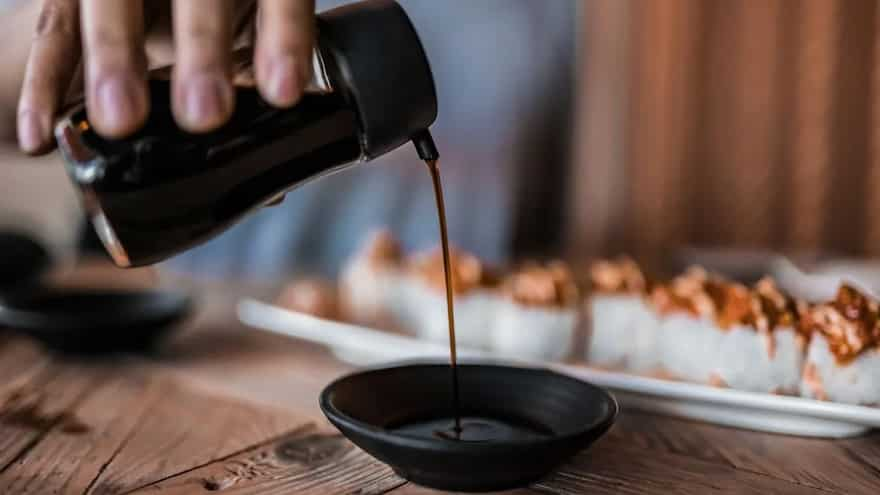Tracing its origin in China, soy sauce has travelled across the globe. Today, it needs no introduction. But do you know that Japan leads in the race to offer a diverse range of this sauce? Though the Chinese are credited with inventing soy sauce, Japan boasts the most varied selection. Unlike the former, the Japanese do not distinguish between light and dark soy sauces. Dark soy sauce, koikuchi shoyu, refers to standard soy sauce in Japan, while usukuchi shoyu translates to light-coloured or white soy sauce. Quite an eye-opening moment, right?
Japanese process of preparing soy sauce

Japanese soy sauce, Image Source: Unsplash
A process known as honjozo accounts for most of the soy sauce preparation in Japan. To create the concoction that would eventually be fermented, the wheat grains and soybeans must first be roasted and steamed, respectively. The processing of ingredients alters based on the kind of soy sauce that is in the making. Sometimes, a few items, like rice and mushrooms, are added. After that, the solution is left to ferment for approximately 6 months.
Here are the varieties.
Koikuchi Shoyu
 Koikuchi shoyu, Pexels
Koikuchi shoyu, Pexels
Chefs in Japan's northern areas routinely use dark soy sauce for everything from marinating to glazing or dipping. Aside from its dark hue, this variety of soy sauce is saltier and has a more robust flavour than light soy sauce. Dark soy sauce is often created in this country with an equal mix of soybeans and wheat. The final product has a deep flavour and is brown with reddish tints. Since the Japanese prefer dark soy sauce as their all-purpose soy sauce, if a recipe needs soy sauce but does not mention the type, infer it's koikuchi shoyu.
Usukuchi Shoyu
 Nabemono, Image Source: Instagram
Nabemono, Image Source: Instagram
A very minimal amount of soybeans is used to make this light soy sauce. Wheat is the main ingredient. In the case of usukuchi shoyu, the fermentation process is reduced, similar to that of Chinese light soy sauce. Extra salt is included in the mixture to inhibit fermentation. This results in a pale golden tint, a mild aroma, and a great umami flavour with a lot of salt. Usukuchi shoyu is used in udon noodle soups, simmered foods like nimono, chawanmushi, the traditional Japanese egg custard, and nabemono, the Japanese hot pot.
Tamari Shoyu
 Sushi with soy sauce, Image Source: Pexels
Sushi with soy sauce, Image Source: Pexels
Japanese Tamari soy sauce has gained popularity with the growing demand for gluten-free products. Tamari is lower in salt and more subtle than traditional soy sauces. It is prepared purely of fermented soybeans and contains no grains. This results in a rich, flavorful gluten-free soy sauce. Tamari is an excellent dipping sauce due to its balanced taste. Some think it's even better than conventional soy sauce for sushi because it's more delicate and doesn't overpower the other flavours.
Saishikomi Shoyu
 Dark soy sauce, Image Source: Unsplash
Dark soy sauce, Image Source: Unsplash
A double-fermented Japanese soya sauce, Saishikomi shoyu is exquisite. The process of preparing it begins with equal parts soybeans and wheat. But conventional Japanese soy sauce is added rather than using saline water to dilute it. As a result, the soy sauce is much darker and has a more decadent, umami-rich flavour. Since making saishikomi shoyu is far more expensive than other soy sauce forms, double-fermented or double-brewed soy sauce is typically used solely with raw fish or on top of tofu.


